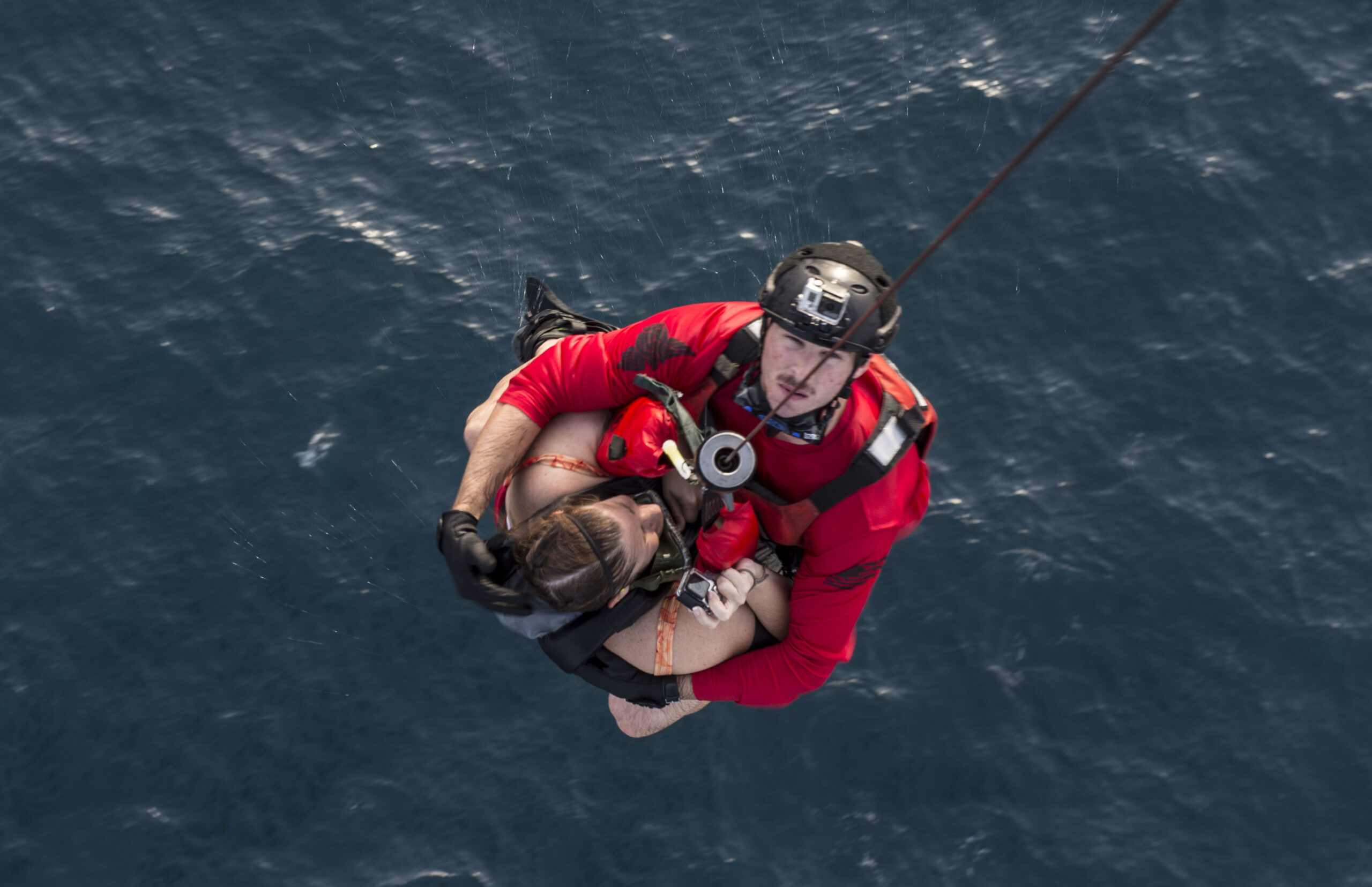

An Air Force medical technician who drowned while riding a Pararescue team’s specialized jet ski was not wearing a life jacket when he suffered a “cardiac event” that sent him into the waters of an Arizona lake.
Air Force Staff Sgt. Kory Wade, 33, drowned June 14 after disappearing during a training exercise on Theodore Roosevelt Lake in Arizona. Wade was attached to the 48th Rescue Squadron, a Pararescue unit at Davis-Monthan Air Force Base, and was riding one of the team’s Advanced Rescue Crafts, or ARCs.
An autopsy found that Wade had 80% blockage of his coronary artery.
“Due to the cardiac event, [Wade] fell into the water and was unable to stay afloat,” the Ground Accident Investigation Board found. Though Wade was qualified to operate the ARC, he did not wear a floatation device at the lake, which is required by both Air Force regulations and Arizona state law.
The report did not identify any outside factors contributing to Wade’s death, finding that his training, the state of the equipment and both his and his partner’s behavior on the ARCs did not contribute to the accident.
The report found that the cardiac event that struck Wade may have been arrhythmia, ischemia or a heart attack, according to the cardiologist who reviewed the case.

Riding an Advanced Rescue Craft
ARCs are specially modified personal watercraft that teams of Pararescuemen, or PJs, use in open water rescue operations. PJ teams can rig the ARCs on cargo parachutes for mid-ocean missions, and tow patients behind them on rescue boards. The machine Wade was on was a 2022 Yamaha Waverunner FX Cruiser Super Vortex High Output.
Wade, a medical logistician assigned to the 48th RQS, was riding the ARC as a support craft for a training exercise in which PJs would arrive at the lake in helicopters and practice water rescue techniques.
Medical personnel and other support troops routinely act in safety and oversight roles during pararescue training and Wade was qualified under pararescue guidelines to operate the ARCs.
A hot day and routine training
The report described the hours before Wade’s death as a relatively routine day of training. Wade and a partner who the report does not identify left Davis Monthan at 7:30 in the morning, driving three hours to Theodore Roosevelt Lake in Gila County. Each drove an Air Force pick-up truck pulling two ARC on a two-trailer. The two launched the ARCs just before 11 a.m. and spent the next two hours zooming around the lake, with the ARCs’ GPS recording them driving as fast as 65 MPH.
Temperatures on the lake reached 90 degrees, the report found. The lake was busy with Air Force training, with members of two other PJ squadrons training on an adjacent section of the lake when Wade and his partner arrived.
Just past 2 p.m., Wade’s partner told investigators he briefly looked at his phone to check on the arrival time of helicopters from the 55th Rescue Squadron, which were headed to the lake with six PJs and two Combat Rescue Officers to practice water rescues.
When the partner looked up, he saw Wade’s ARC drifting without him. Pulling up beside the machine, the partner realized Wade was missing and activated a “man overboard” beacon.
An extensive search by the inbound helicopters, other PJ teams and civilian authorities did not locate Wade for three days. His body was recovered by a Remotely Operated Vehicle from the lake’s floor, 129 feet below the surface.
Wade joined the Air Force in 2008 and was assigned to the 48th’s Operational Support Medical Flight.
The latest on Task & Purpose
- Navy will name a new ship for the ‘human tugboat,’ a forgotten WWII hero
- Soldiers now must pay out of pocket to store cars and belongings while deployed
- Inside a new technology for Marine marksmanship training
- Apple TV+ releases the opening title sequence for Masters of the Air
- Meet the skateboarding Green Beret shredding the civilian-military gap